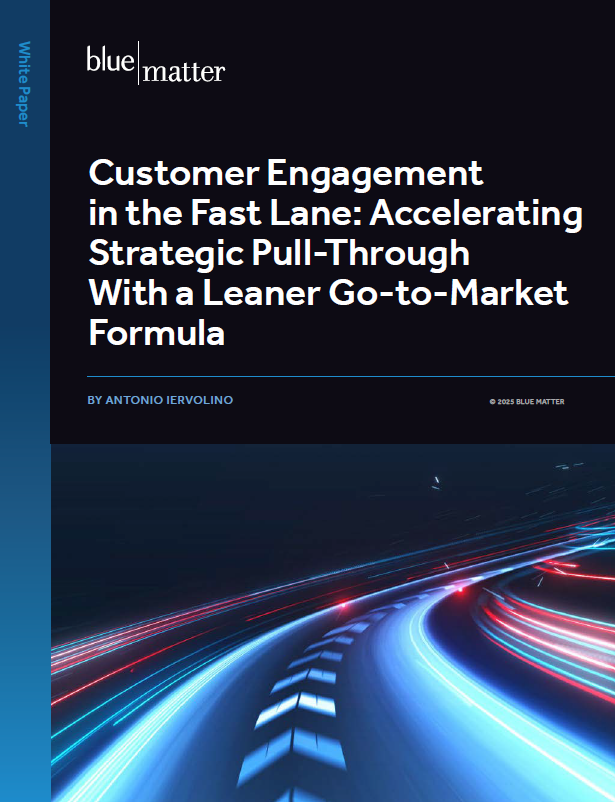
As a growing biopharma company progresses from a single-asset organization to one with a multi-asset portfolio, strategic decision-making gets increasingly complex. Resource allocation decisions become increasingly challenging as the company’s previous decision-making processes slide towards obsolescence. New approaches are required to drive sound portfolio decisions.
In part 1 of this series, we looked at one key aspect of this evolutionary process: portfolio forecasting. We explored how emerging companies can more holistically understand the value of a portfolio comprised of diverse assets. Here, in part 2, we advance the discussion to portfolio prioritization. How can decision makers more effectively prioritize assets and programs within a portfolio and allocate resources accordingly?
Decision Science and Asset Prioritization
Once the company has completed commercial opportunity assessments for individual programs in its portfolio, the critical next step is prioritization. With finite resources, no organization can pursue every promising program. Prioritization is the disciplined process of allocating capital to those projects that best advance the organization’s strategic goals. The objective is to translate individual opportunity assessments into a cohesive, value-maximizing portfolio strategy.
While portfolio strategy operationalizes corporate strategy, it does not do so in a vacuum. It involves a diverse group of stakeholders with varying perspectives and preferences. And yet, they must make decisions that are aligned, tangible, actionable, and tractable. The key to ensuring alignment among these stakeholders is an effective and transparent process that they can leverage together. The Decision Path framework leverages decision science to do this, and it outlines five key success factors:
- Proactive Framing: Focus on the decisions that matter within the right strategic frame.
- Intentional Objectives: Consciously define objectives and success factors aligned with strategic priorities.
- Innovative Alternatives: Actively seek creative alternatives that offer decision makers meaningful and actionable options.
- Informed Assessments: Collect decision-relevant information and acknowledge what is unknown in unbiased range assessments.
- Consistent Decisions: Ensure decisions stay aligned with objectives and are followed through during implementation.
Some methods for applying decision science are more qualitative, while others are more quantitative. Both types have their place in different contexts. Ideally, any project or portfolio evaluation considers both to ensure that it’s comprehensive and considers important nuances. Quantitative approaches are generally more applicable to later-stage assets, while qualitative approaches are often more appropriate for early-stage ones.
Qualitative methods use a multi-criteria-based approach that defines the attributes that constitute a “valuable” project spanning strategic, commercial, scientific, and operational considerations. Each of the criteria is then assigned a weight to reflect its relative importance to the company’s overall strategy, ensuring alignment with organizational priorities. Projects are subsequently scored against those criteria, usually on a standardized scale, and the scores are combined with the weights to generate an overall value score. This calculation allows projects to be rank-ordered and compared systematically across the portfolio.
Quantitative approaches to portfolio prioritization rely on robust analytical and financial models. If revenue and expense forecasting have been done well, many of the underlying scientific, competitive, and operational factors may already be covered. For example, these may include Probability of Technical and Regulatory Success (PTRS) assessments for scientific risk, market share assumptions for competitive understanding, or trial expense estimates for clinical operations. In such cases, it is often more powerful to rely directly on revenue and expense forecasts, which can provide a quantitative assessment for portfolio prioritization.
A natural question that may arise is: Can the assumptions underlying a forecast model be subject to bias, thereby skewing the results? The approaches outlined below are intended to move decision-making away from static, single-point forecasts characterized by subjective debate to more objective, data-driven R&D investment choices. Done properly, that can empower leaders to maximize long-term value aligned with corporate goals while navigating significant uncertainty in assumptions and budgetary constraints.
The Power of Probabilistic Modeling
Advanced prioritization methods should incorporate the fourth success factor of the Decision Path framework: informed assessments. Meaning, they must incorporate risk and uncertainties when looking to present optimized portfolios. Traditional methods include evaluating risk-adjusted Net Present Value (rNPV). However, that provides a single number, a point estimate of an asset’s value. While useful for quick comparisons, this single value fails to capture the vast range of potential outcomes inherent in drug development and commercialization.
To overcome this, probabilistic modeling through Monte Carlo simulations can provide a range of possible outcomes for an asset’s valuation. Beyond a revenue forecast, this can place ranges on the commercial opportunity combined with risks, development costs, timeline variability, and more to generate a full probability distribution of potential rNPV outcomes. This provides a far richer picture, allowing decision-makers to see not just the expected (mean) value of a project, but also the likelihood of downside scenarios (e.g., the probability of a negative NPV) and the potential for a massive upside (e.g., the probability of achieving blockbuster status). This shift is foundational in making effective and objective decisions.
Approaches for Portfolio Optimization
The key question really is how to select the optimal combination of programs to fund. There is no absolute best portfolio, as much depends on the company’s specific strategic objectives. A robust prioritization methodology should be capable of ranking and selecting programs based on distinct approaches, allowing leadership to view the portfolio through multiple lenses. The approaches outlined below also have distinct objectives in mind. This speaks to the second dimension of the Decision Path framework: intentional objectives. Consciously defining objectives and success factors aligned with strategic priorities helps identify and project the best portfolio options.
Approach 1: Maximizing Net Present Value (NPV)
This is the classic value-maximization approach, designed for organizations whose primary goal is to maximize long-term shareholder value. This prioritization approach will identify the specific bundle of R&D programs that yields the highest possible total portfolio rNPV, all while adhering to high level budget constraints. This model is purely financially driven, prioritizing assets based on their ultimate, risk-adjusted commercial potential over their entire lifecycle.
Watchouts: While rigorous for capturing long-term value, this approach underweights near-term financial dynamics. Cash flow requirements, phasing of expenses, and timing of launch revenues are not adequately reflected. Consequently, programs with significant upfront investment may appear attractive on paper but create financial strain in near-term. It is also less effective for comparing programs with different investment and timing profiles.
Approach 2: Optimizing Cash Flow / Earnings per Share (EPS)
For smaller companies, managing liquidity can be as critical as value creation, while for mid-to-large firms, EPS stability and growth are often paramount. The long development cycles and immense upfront costs of R&D can create significant cash flow challenges. This approach aims to build a portfolio that is financially sustainable over the planning horizon by explicitly factoring in the timing of cash outflows (R&D, SG&A expenses) and potential cash inflows (revenues from launched products or partnerships). The model would select a balanced mix of projects across development phases, risk profiles, and timing of revenue and expenses, to ensure the company has the financial resilience needed to see its most promising assets through to completion.
Watchouts: This approach can deprioritize transformative, early-stage assets that are essential to long-term growth. Portfolio prioritization modeling is also highly sensitive to PTRS assumptions, which can shift outcomes significantly. Overreliance on near-term financial performance may weaken the long-term innovation pipeline.
Approach 3: Unlocking Value at Inflection Points
Biopharma value creation is often concentrated at discrete milestones, such as the successful completion of a clinical phase or pivotal data readout. This approach prioritizes assets based on delta rNPV, which is the incremental value unlocked at the next inflection point. It is particularly well-suited for companies seeking to signal momentum to investors, attract partners, or position themselves for acquisition, as it emphasizes near-term appreciation and pivotal events.
Watchouts: By focusing narrowly on near-term milestones, this approach risks overlooking programs with larger downstream value creation. Portfolios may skew toward assets that generate frequent valuation bumps but fail to maximize ultimate commercial scale. Companies that lean too heavily on this strategy may appear milestone-rich but commercially underpowered over time.
It is important to note that these three analytical approaches will likely recommend three different portfolios. The “Highest NPV” portfolio might overlook early-stage, high-risk assets. The “Cash Flow” portfolio might be more conservative, sacrificing some upside for stability. The “Value Unlock” portfolio might prioritize near-term wins at the expense of longer-term foundational programs. The goal is not to simply accept one model’s output, but to use all the outputs to facilitate a high-level strategic dialogue.
That can be achieved through a clear and intuitive dashboard that presents recommendations from each prioritization approach. This allows leadership to visualize and understand the trade-offs. By comparing the different portfolios, decision-makers can forge a blended strategy that consciously balances the competing objectives of maximizing long-term value, ensuring financial sustainability, and delivering near-term progress.
Coming Next
In our upcoming third (and final) installment, we’ll cover the topic of portfolio reviews and ongoing management. Once a company has developed a sound, holistic understanding of its portfolio’s value and has made well-supported resource allocation decisions, the process doesn’t just end there.
As time passes, change will come, and a company must be able to account for that. For example, circumstances may change related to specific assets (e.g., clinical data may read out that could be highly positive for an asset…or not). In addition, environmental factors can change, as can the company’s strategic priorities. We’ll explore how a company can systematically assess its portfolio and adjust its strategic decisions based on those environmental or asset-specific changes.
To stay up to date on our latest publications, please follow Blue Matter on LinkedIn or check our Insights page regularly.







